Update 08.22.2018 -- Run 9 pp: unfolding, pi0 and gamma triggers (R = 0.2, eTtrg = 9 - 20)
After examining how the Run 9 gamma-rich purity varies with zTtrk, I attempted to unfold both pi0 and gamma-rich triggers in all 3 bins of eTtrg for R = 0.2. The response matrix I used to unfold all 3 bins corresponds to the R = 0.2 case found in these posts:
https://drupal.star.bnl.gov/STAR/blog/dmawxc/update-08072018-run-9-embedding-jet-energy-resolution-r-02-03-04-and-05
https://drupal.star.bnl.gov/STAR/blog/dmawxc/update-08132018-run-9-embedding-updated-jet-matching-efficiency-and-jet-energy-resolutio
To do the background subtractions and obtain the gamma-direct spectra, I used the purity values corresponding to the calculation where only tracks with zTtrk = 0.2 - 0.3 (for eTtrg = 9 - 15 GeV) or zTrk = 0.2 - 0.5 (for eTtrg = 15 - 20 GeV) were used. The relevant plots can be found in this post:
https://drupal.star.bnl.gov/STAR/blog/dmawxc/update-08202018-run-9-pp-purity-testing-zttrk-cuts
The numerical values are:
| eTtrg [GeV] | B |
| 9 - 11 | 0.65 |
| 11 - 15 | 0.55 |
| 15 - 20 | 0.42 |
The unfolding results were selected by choosing the combination of algorithm an regularization parameter (kReg) which gave the chi2 between the pi0-triggered data and backfolded distributions closest to 1. The corresponding gamma-rich distributions were then unfolded using the same algorithm and kReg.
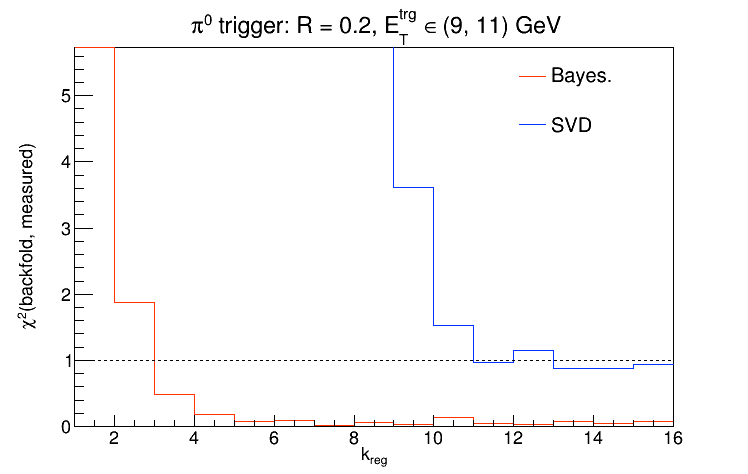
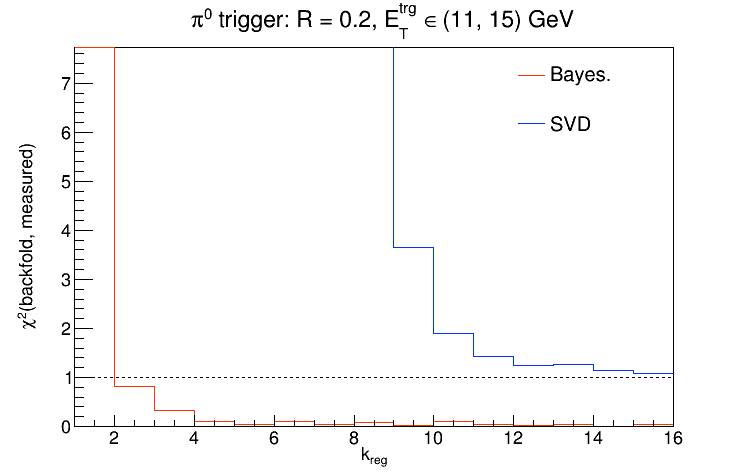

And so, the unfolding results are shown below. [I apologize for the difference in aspect ratios between the unfolded pi0 and gamma-direct distributions :/]
eTtrg = 9 - 11 GeV: SVD algorithm, kReg = 11
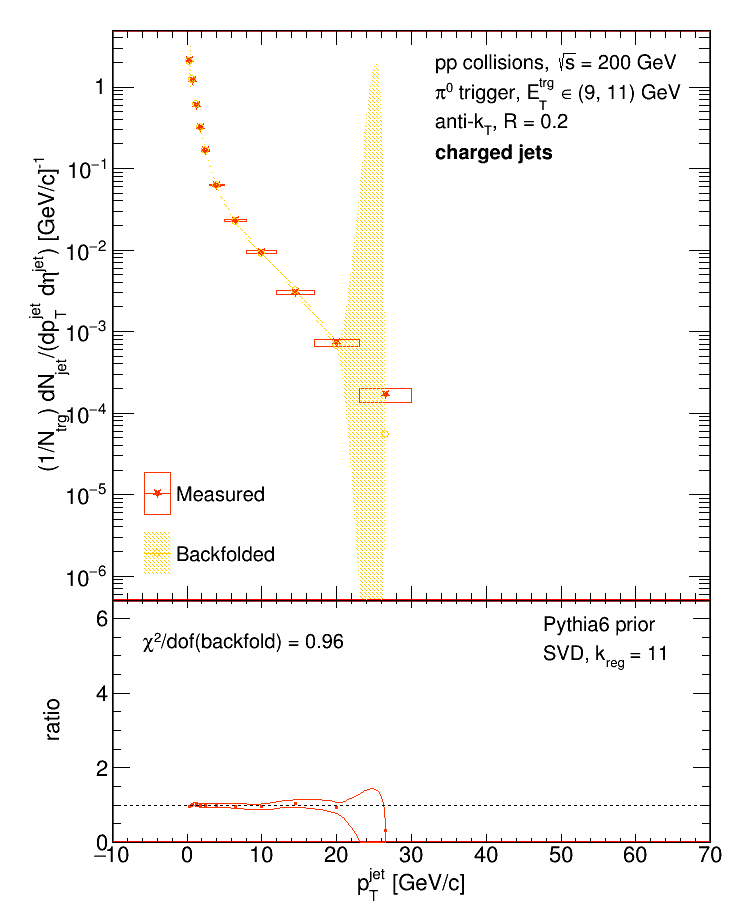
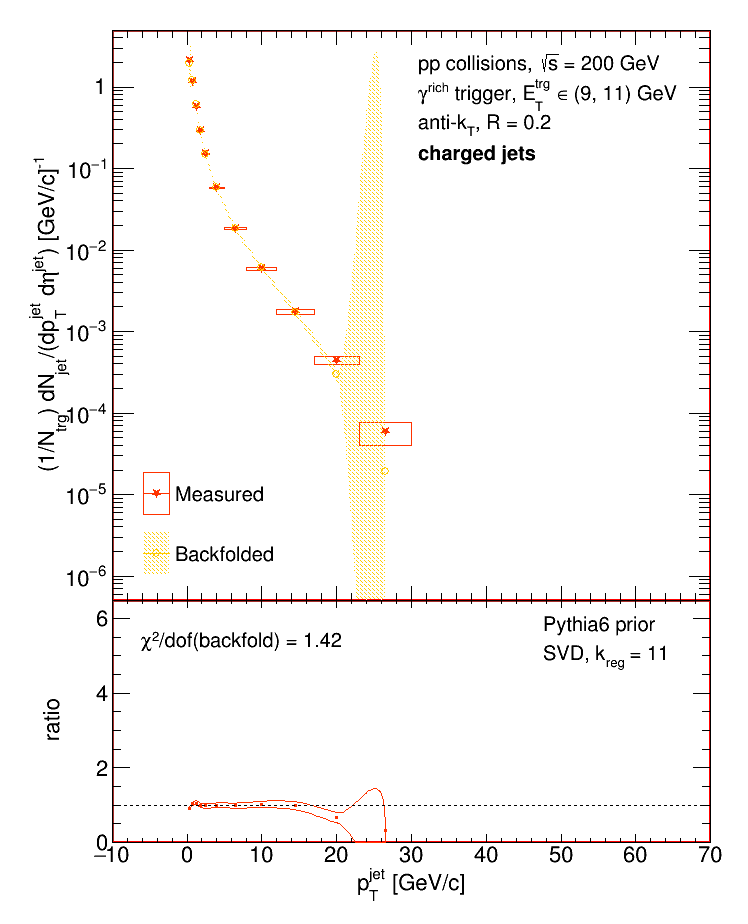
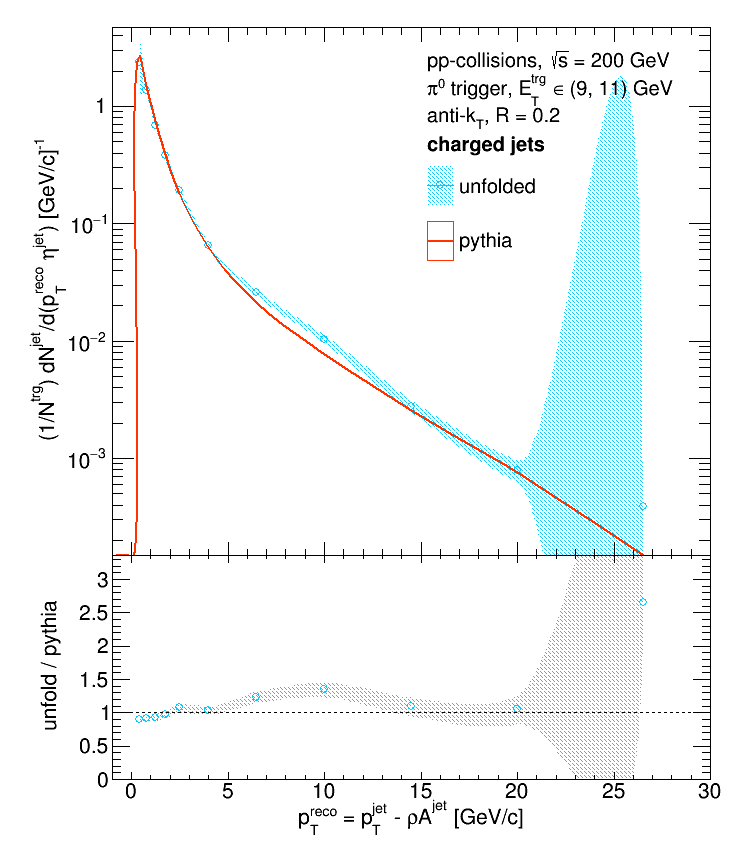
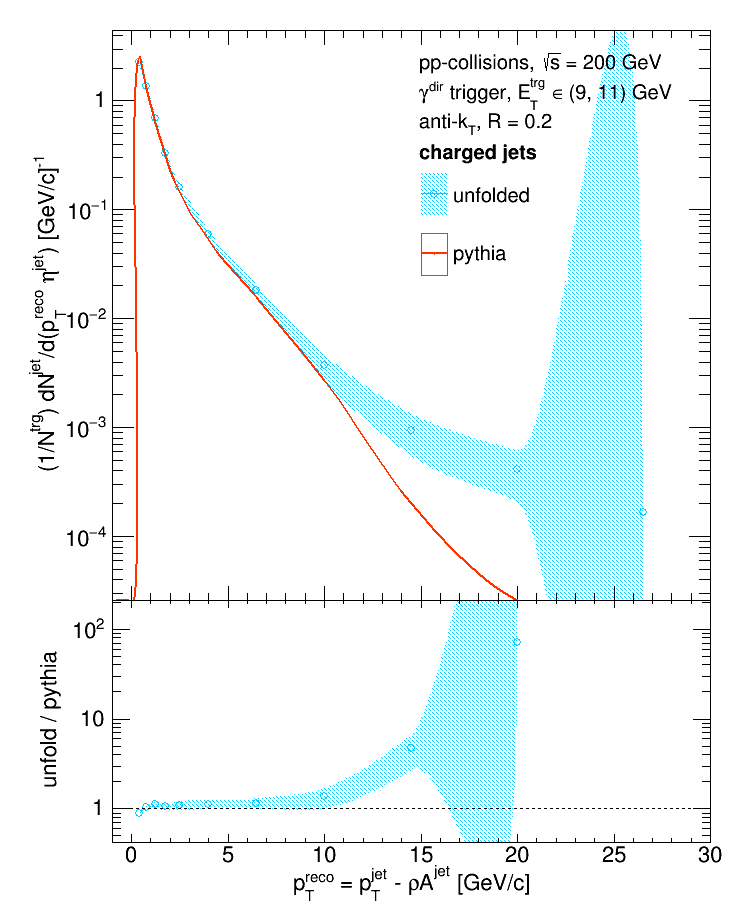
eTtrg = 11 - 15 GeV: Bayesian algorithm, kReg = 2
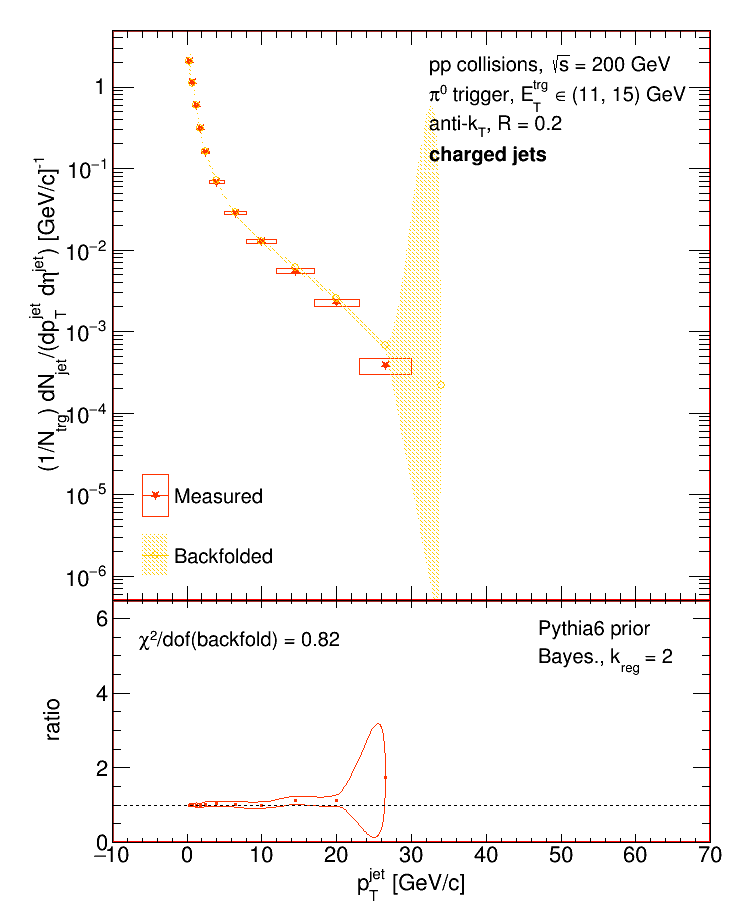
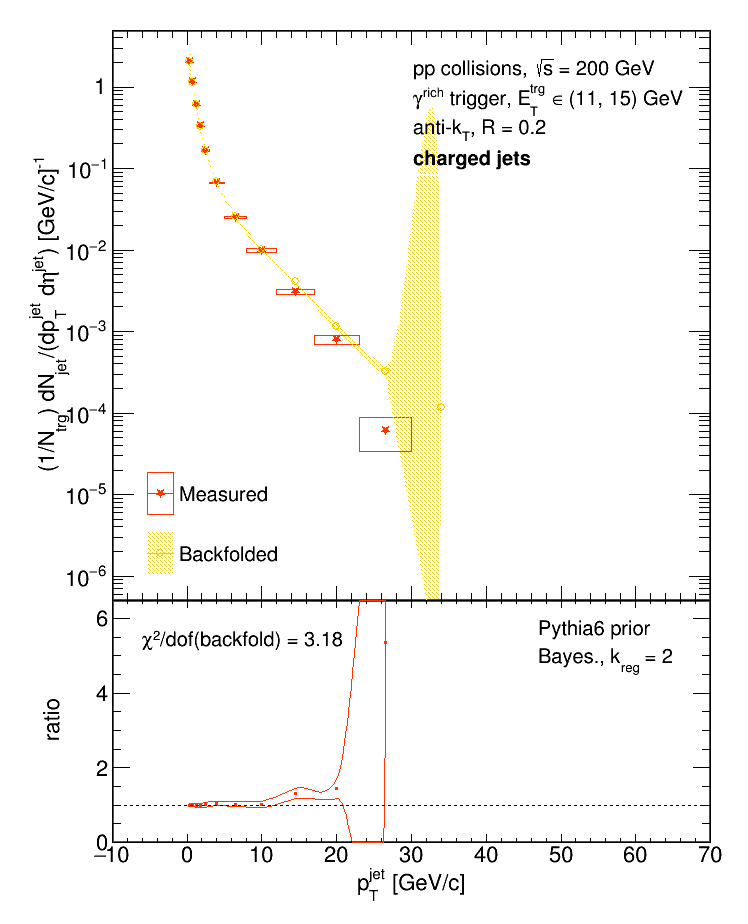
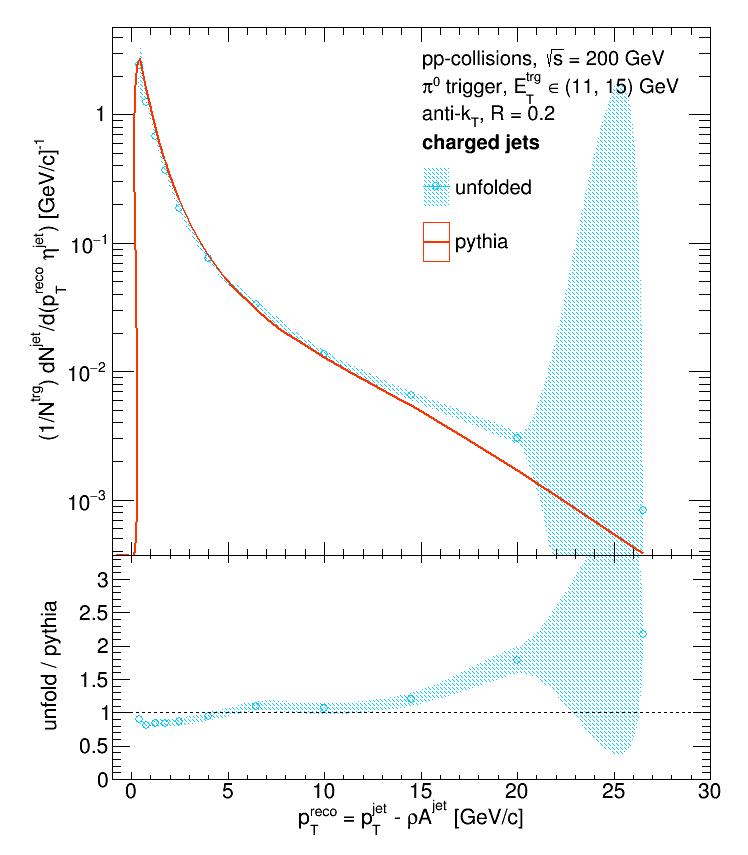
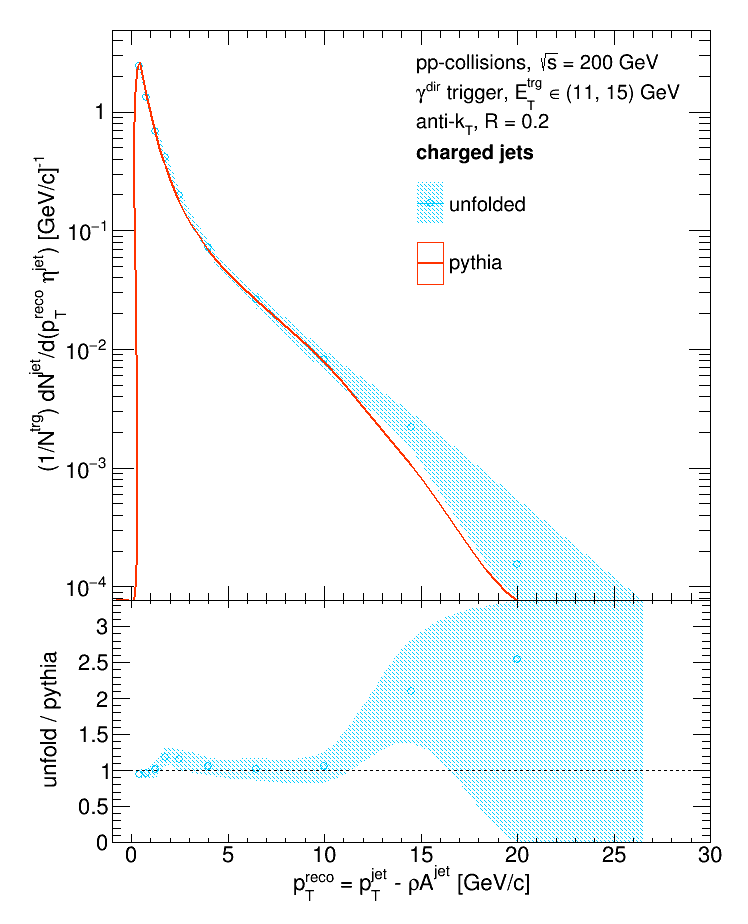
eTtrg = 15 - 20 GeV: SVD, kReg = 10
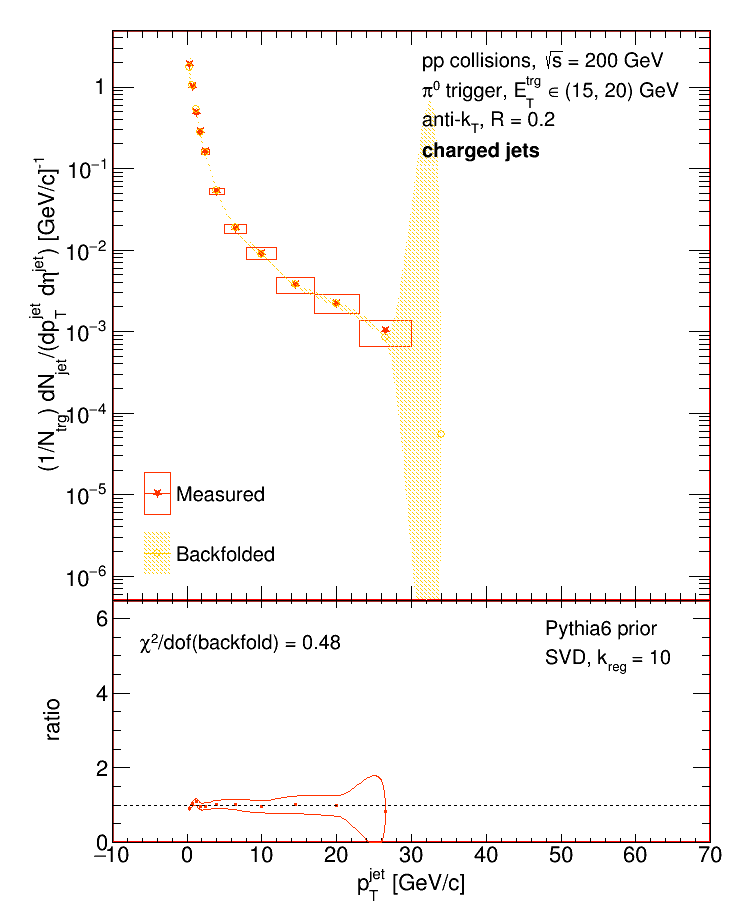


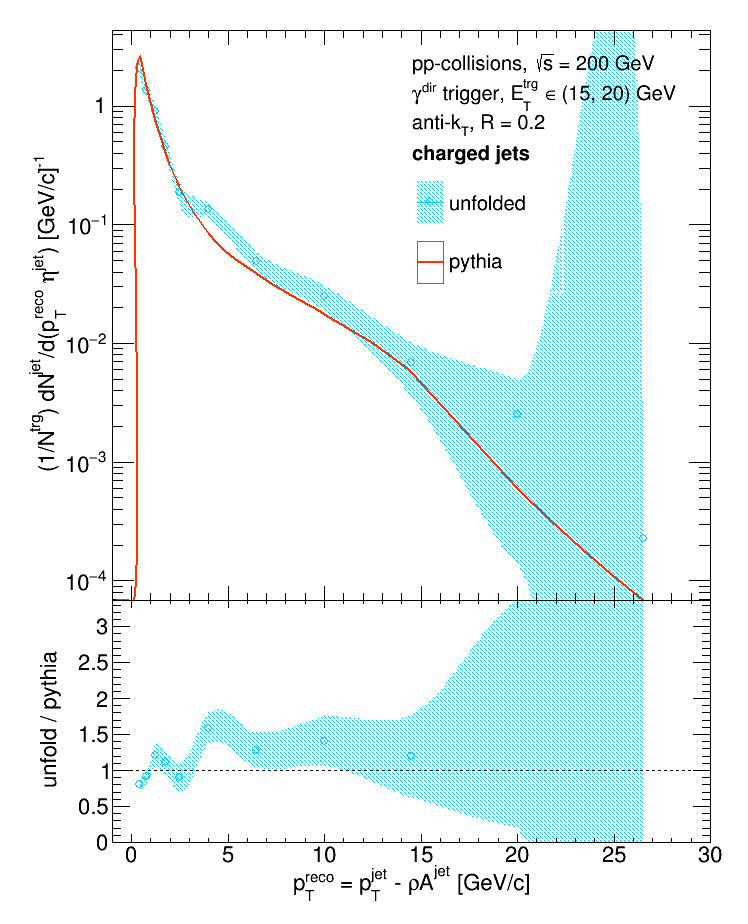
Aside from the eTtrg = (15, 20) GeV bin, the results agree quite well. The next step will be to try the unfolding with response matrices made with the correct eTtrg ranges, and vary the method, kReg, and prior to obtain the systematic errors.
- dmawxc's blog
- Login or register to post comments
